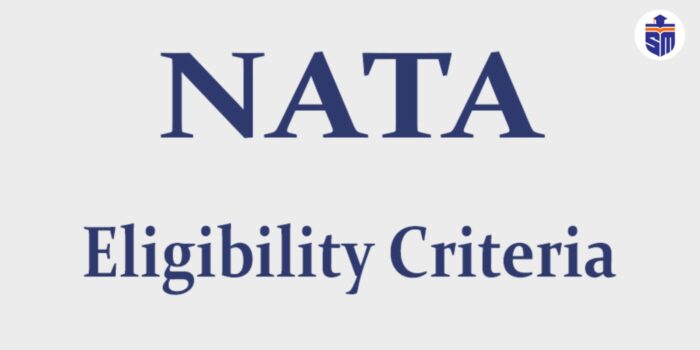
NATA: Complete Guide to National Aptitude Test in Architecture
Introduction to NATA
The National Aptitude Test in Architecture (NATA) is a national-level entrance examination conducted by the Council of Architecture (CoA) for admission to the 5-year B.Arch (Bachelor of Architecture) program in architectural institutions across India. NATA assesses candidates’ aptitude for architecture through a standardized test focused on drawing skills, aesthetic sensitivity, and architectural awareness, along with logical reasoning and general aptitude.
Architecture as a profession requires a unique blend of artistic vision, technical knowledge, and problem-solving skills. NATA serves as the first step in identifying candidates who possess the natural aptitude and creative thinking necessary to excel in this multidisciplinary field. The examination is designed to evaluate not just academic knowledge but also the innate design sensibilities that form the foundation of architectural education.
Established under the Architects Act, 1972, the Council of Architecture ensures that NATA maintains high standards of evaluation, providing architectural institutions with qualified candidates who demonstrate the potential to develop into skilled architects. The test’s comprehensive nature makes it a reliable indicator of a student’s suitability for the rigorous architectural curriculum that awaits them.
NATA Exam Pattern
NATA is typically conducted multiple times a year (2-3 sessions), allowing candidates to attempt the examination more than once and use their best score for admissions.
Test Structure
- Mode: Computer-Based Test (Part A) and Drawing Test (Part B)
- Duration: 3 hours total (180 minutes)
- Total Marks: 200
- Sections:
- Part A: Multiple Choice Questions (MCQs) – 125 marks
- Part B: Drawing Test – 75 marks
Part A: Multiple Choice Questions (125 marks)
- Mathematics: 25 questions (20 marks)
- General Aptitude: 35 questions (35 marks)
- Diagrammatic Reasoning: 35 questions (35 marks)
- Situational Judgment: 35 questions (35 marks)
Part B: Drawing Test (75 marks)
- 2 questions (37.5 marks each)
- Tests drawing aptitude, sense of proportion, perspective, composition, and imagination
Marking Scheme
- No negative marking
- All questions in Part A carry equal marks
- Drawing questions are evaluated based on multiple parameters including composition, proportion, perspective, and creativity
NATA Syllabus and Important Topics
1. Mathematics
- Algebra: Linear equations, quadratic equations, logarithms
- Coordinate Geometry: Straight lines, circles, conic sections
- Calculus: Functions, limits, continuity, differentiation
- Trigonometry: Trigonometric ratios, identities, heights and distances
- Mensuration: Areas and volumes of geometric figures
- Statistics and Probability: Measures of central tendency, probability concepts
2. General Aptitude
- Verbal Reasoning: Critical reasoning, sentence completion, verbal deduction
- Numerical Reasoning: Number series, coding-decoding, data interpretation
- General Knowledge: Current affairs, famous personalities, landmarks, art and culture
- English Language: Grammar, vocabulary, comprehension
3. Diagrammatic Reasoning
- Visual reasoning
- Pattern recognition
- Spatial ability
- Figure matrix problems
- Paper folding and cutting
- Mirror images and water images
4. Situational Judgment
- Analytical reasoning
- Decision-making scenarios
- Ethical dilemmas
- Professional situations
- Prioritization problems
5. Drawing Test
- Geometrical Drawing: Creating 2D and 3D compositions using basic shapes
- Three-Dimensional Perception: Understanding and representing 3D objects
- Free-hand Drawing: Sketching everyday objects, scenes, activities from memory
- Perspective Drawing: Understanding vanishing points and creating perspective views
- Architectural Awareness: Representing architectural elements and spaces
- Imagination and Aesthetic Sensitivity: Creative compositions based on themes
NATA Preparation Strategy
1. Recommended Study Materials & Books
Mathematics:
- NCERT Mathematics Class 11 & 12 (foundation)
- NATA Mathematics by Arihant Publications
- Quantitative Aptitude for Architecture Entrance by Ashok Goel
General Aptitude:
- A Complete Self Study Guide for B.Arch Entrance Examination by P.K. Mishra
- NATA & B.Arch Complete Self Study Material by Ar. Shadan Usmani
- Current affairs magazines and newspapers for GK
Drawing Skills:
- NATA Drawing by Ar. Nimish Madan
- Steps to Architecture: NATA and B.Arch by Ar. Praveen Yadav
- Sketching for Architecture + Interior Design by Stephanie Travis (reference)
- Freehand Drawing and Discovery by James Richards (reference)
2. Effective Time Management
- Long-term Planning (4-6 months):
- First 2 months: Build foundational skills in mathematics and drawing
- Next 2 months: Practice specific question types and develop speed
- Final 2 months: Mock tests, time management, and refinement of skills
- Daily Schedule:
- 1-2 hours for Mathematics
- 1-2 hours for General Aptitude
- 2-3 hours for Drawing practice
- Regular breaks using the Pomodoro technique
- Weekend mock tests for assessment
3. Section-wise Preparation Tips
Mathematics
- Focus on concepts that appear frequently in NATA
- Practice time-bound question sets to improve speed
- Create formula sheets for quick revision
- Solve previous years’ questions to understand the pattern
- Focus on visualization of mathematical concepts in 3D space
General Aptitude
- Read newspapers and magazines daily
- Note important current events, personalities, and landmarks
- Practice logical reasoning questions daily
- Enhance vocabulary through reading and word exercises
- Take regular mini-tests for this section
Drawing
- Practice sketching daily – make it a habit
- Start with basic geometric shapes and progress to complex compositions
- Learn perspective drawing techniques (1-point, 2-point, 3-point)
- Practice drawing everyday objects from different angles
- Work on timed drawing exercises to improve speed
- Take photographs and try to sketch from them
- Visit architectural sites and practice sketching buildings
4. Developing Drawing Skills for NATA
- Start with Basics: Master line quality, proportions, and basic geometric forms
- Understand Light and Shadow: Practice shading techniques to create volume
- Learn Perspective: Practice 1-point, 2-point, and 3-point perspective drawing
- Composition Skills: Study principles of design, balance, and visual hierarchy
- Memory Drawing: Practice sketching objects from memory to improve visualization
- Color Theory: Understand basic color concepts and their application
- Architectural Elements: Study and sketch columns, arches, stairs, and other architectural components
- Material Rendering: Practice representing different materials (wood, stone, glass, etc.)
- Human Scale: Learn to incorporate human figures to establish scale in architectural drawings
- Speed Sketching: Practice timed exercises to increase efficiency
5. Practice Tests and Assessment
- Take at least 10-15 full-length NATA mock tests
- Practice section-wise tests to strengthen individual areas
- Analyze performance after each test to identify weak areas
- Get your drawings evaluated by architects or art teachers if possible
- Maintain a drawing portfolio to track your progress
Top Architecture Colleges Accepting NATA Scores
India has numerous prestigious architecture colleges that accept NATA scores for B.Arch admissions:
Government Colleges
- School of Planning and Architecture (SPA), New Delhi
- School of Planning and Architecture, Bhopal
- School of Planning and Architecture, Vijayawada
- Faculty of Architecture, IIT Roorkee
- Department of Architecture, NIT Calicut
- Department of Architecture, NIT Tiruchirappalli
- Faculty of Architecture, CEPT University, Ahmedabad
- Sir J.J. College of Architecture, Mumbai
- Chandigarh College of Architecture
- Department of Architecture, Jadavpur University, Kolkata
Private Colleges
- Manipal School of Architecture and Planning, Manipal
- B.M.S. College of Architecture, Bangalore
- R.V. College of Architecture, Bangalore
- Sushant School of Art and Architecture, Gurgaon
- Rizvi College of Architecture, Mumbai
- Jamia Millia Islamia, New Delhi
- Pearl Academy of Fashion, New Delhi
- MEASI Academy of Architecture, Chennai
- School of Architecture, D.Y. Patil University, Mumbai
- L.S. Raheja School of Architecture, Mumbai
NATA Admission Process
- Registration: Register on the official NATA website
- Application Submission: Complete the application form with necessary details
- Fee Payment: Pay the application fee online
- Admit Card Download: Download the admit card before the exam date
- NATA Exam: Appear for the computer-based test and drawing test
- Results Declaration: Check results on the official website
- Counseling Process:
- Apply to individual colleges using NATA score
- Different colleges have different counseling procedures
- Document verification at selected institutions
- Some states conduct centralized counseling for state quota seats
- Merit list preparation based on NATA scores and other criteria
- Seat allotment based on merit and preferences
- Fee payment and confirmation of admission
NATA vs. JEE Paper 2 for Architecture
NATA and JEE Paper 2 (for B.Arch) are the two main entrance examinations for architecture programs in India. Here’s how they differ:
Conducting Body:
- NATA: Council of Architecture (CoA)
- JEE Paper 2: National Testing Agency (NTA)
Purpose:
- NATA: Admission to B.Arch programs across India (except IITs)
- JEE Paper 2: Primarily for NITs and some other institutions
Exam Pattern:
- NATA: Two parts (MCQs and Drawing Test)
- JEE Paper 2: Three parts (Mathematics, Aptitude Test, and Drawing Test)
Drawing Component:
- NATA: More emphasis on drawing skills (75 marks)
- JEE Paper 2: Relatively less emphasis on drawing (70 marks)
Attempts Allowed:
- NATA: Multiple attempts per year (typically 2-3 sessions)
- JEE Paper 2: Twice a year typically
Acceptance:
- NATA: Widely accepted by most architecture colleges
- JEE Paper 2: Mainly for NITs and some other government institutions
Career Prospects in Architecture
A degree in architecture opens doors to diverse career opportunities:
Traditional Architecture Careers
- Architectural Practice: Working in architecture firms or establishing your own practice
- Urban Planning: Designing cities, neighborhoods, and public spaces
- Interior Design: Specializing in designing interior spaces
- Landscape Architecture: Designing outdoor spaces and environments
- Conservation Architecture: Preserving and restoring historic buildings
Emerging Fields in Architecture
- Sustainable Design: Focusing on environmentally conscious architecture
- Parametric Design: Using computational design techniques
- Virtual Reality in Architecture: Creating immersive architectural experiences
- Building Information Modeling (BIM): Managing digital representations of buildings
- Architectural Visualization: Creating photorealistic renderings and animations
Related Career Paths
- Architectural Journalism: Writing about architecture and design
- Architectural Photography: Specializing in photographing buildings and spaces
- Furniture Design: Creating custom furniture pieces
- Exhibition Design: Designing museum exhibitions and installations
- Academic Pursuits: Teaching and researching in architecture schools
Conclusion
NATA serves as the crucial first step for aspiring architects on their journey to becoming design professionals who shape the built environment. Success in this examination requires a balanced approach to developing both analytical and creative abilities, along with a genuine passion for architecture.
The examination’s unique format, combining objective assessment with creative evaluation, ensures that candidates possess both the technical knowledge and artistic sensibility essential for architectural education. While the preparation process demands dedication and consistent practice, particularly in developing drawing skills, it also offers students an opportunity to discover and nurture their creative potential.
Interested in Direct Admission in India?
Get Direct Admission in India’s Top Universities / College.





